- Reviews
- Best Classic Cars
- Ask HJ
- How Many Survived
- Classic Cars For Sale
- Insurance
- Profile
- Log out
- Log in
- New account
Vauxhall Astra GTE (1983 – 1984) Review
Vauxhall Astra GTE (1983 – 1984) At A Glance



General Motors was a late entrant to the hot hatch market waiting until 1983 - but when it did turn up to the party, it did so with an amazingly effective weapon. The original Cavalier SRi-powered 115bhp car was just about perfect in every way - and easily a match for the all-conquering Golf GTI.
Even in cooking form, the Astra was a great handling car, but when fitted with wide, low-profile tyres, lowered suspension and gifted the excellent 1.8-litre 'Family Two' engine, it was transformed into a flying machine. The GTE arrived in 1983, and within a few months received a close-ratio gearbox – to answer the only criticism of the launch cars, their too-high gearing. Yet, not long after, the Mk1 GTE made way for the aerodynamic Mk2 version. Not many survive now, and rust claimed many.
Driving Vauxhall Astra GTE (1983 – 1984)
The Astra might have been late to the GTI Club, but it certainly should have made up for for being unfashionably tardy with its crackerjack 115bhp GTE Mk1. It combined the sharp handling of an XR3 with the fuel injected performance and efficiency of a Golf.
Keith Adams drives Vauxhall Heritage's fabulous GTE from Nice to Geneva, and allows it to get under his skin in the process.
Classic road test: Vauxhall Astra GTE
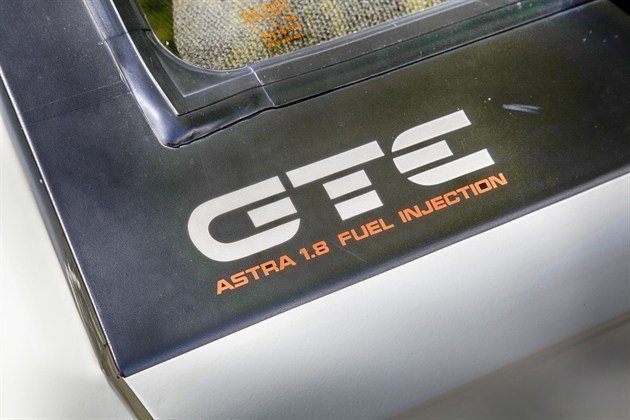
Remember when fuel injection was something to boast about?
For those old enough to remember the hot hatch wars of the 1980s, the Vauxhall Astra GTE Mk1 was always something of a bit-part player in a crowded feature full of mega-stars when it turned up in 1983. It wasn't as if the Astra was not good enough to tilt at class leadership - it was just a case of too little, too late.
And that's a shame because everybody loved a hot hatch. And why wouldn't they? The state of play in the affordable sports car market was abysmal when the Golf GTI appeared - and very quickly indeed, a generation of young hotshoes cottoned on to the remarkable run these cars dolled out. You could now have your cake, eat it, and bring your family along for the ride at the same time.
In a few short years since the Golf GTI had arrived in 1977 (and in RHD form in the UK in 1979), it had come to dominate and define the sector like no other car. The one that came the closest in those formative years was 1980′s Ford Escort XR3 – as as we know, that really was a case of style over substance. And despite its faults, the Escort XR3 became the sector's best-selling car.
About the Vauxhall Astra GTE
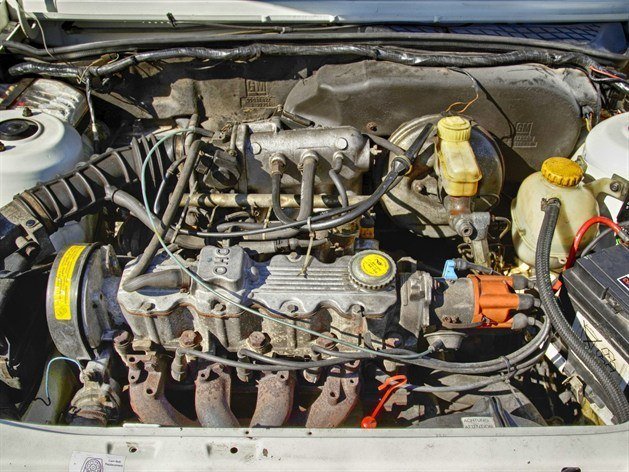
GM's Family II engine is smooth, revvy and perfectly suited to powering a hot hatch.
The Vauxhall Astra Mk1 (and Kadett cousin) actually had a year’s head start over the Escort III on the UK market, and established itself as an impressive overall package, with lots of room, keen handling and sharp styling. But what it lacked was a credible GTI-rivalling model in the line-up – the two-tone SR looked the part, but it wasn’t until 1982, it received anywhere near the power to go hot hatch fighting, with the fitment of the Cavalier’s 1.6-litre 90bhp Family Two under the bonnet. Shame, because it looked the part and handed like it was on rails. So the potential was clearly there.
The transformation from SR to GTE wasn’t just about its engine – the car’s flared arches were joined by aggressive looking skirts and spoilers, all of which were body-coloured
Ford, in the meantime didn’t make the same mistake. The 1980 Escort came with the XR3 from launch, and despite lacking the Golf GTI’s mechanical sophistication, its cloverleaf alloys, outrageous boot spoiler, lowered suspension and driver-focused interior meant oodles of showroom appeal, and Uncle Henry’s challenger sold like hotcakes from the word go. Vauxhall’s proper answer took until 1983, when the GTE was created, when those clever engineers at Russelsheim fitted a 1.8-litre 115bhp Cavalier SRi/CDi under the bonnet of the former hot-shot SR, leapfrogging to the head of the class.
The transformation from SR to GTE wasn’t just about its engine – the car’s flared arches were joined by aggressive looking skirts and spoilers, all of which were body-coloured. And that gave the GTE a newly beefed-up appearance that was truly in tune with the desires of its buyers.
On the road
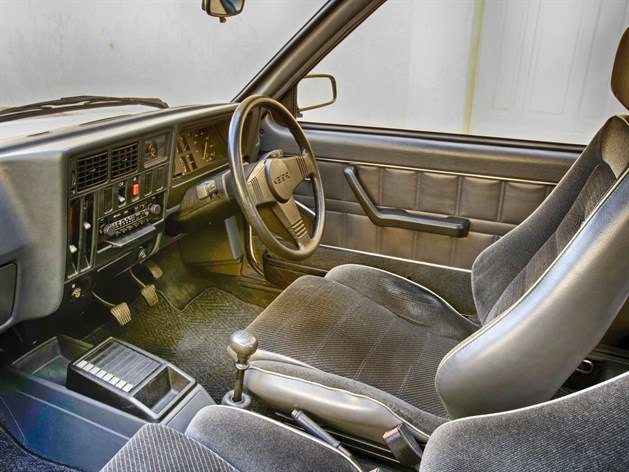
Business-like interior: facia looks a little austere, but instruments are superb, and the Recaro seats supportive
Today, as appreciation for 1980s metal becomes increasingly mainstream, the GTE looks as sharp as it ever did. Other drivers stop and stare, and its four-square squat stance and daintiness (in modern terms) really set it apart. Of course, we’re motoring through the south of France, where a British-badged Vauxhall of this era is going to be as rare as a Talbot Tagora back in Luton, but it’s certainly not the rarity of the GTE that’s entirely responsible for all of this attention.
Performance was class-leading – 0-60mph in 8.5 secs and a maximum of 115mph – and even today, where you average 2.0-litre turbodiesel would leave it for dead, it feels quick, alert, and sporting
Sitting snugly in the Recaro driver’s seat, one can’t help but come away with the impression that this is a grown-up car to drive. The interior’s dark and quite sombre, the steering wheel rather upright, and the pedals widely spaced (and not ideally positioned for nifty footwork – the high clutch and low throttle will be familiar to GM drivers of this era). The visibility is also excellent, and the overall impression the GTE gives you is that, other than its heavy low-geared manual steering, it’s effortless and docile to drive, with a mature and well-engineered drivetrain. I’m warming to it quickly.
As the roads clear it’s time see how well the GTE goes. The crisp throttle response promises sharp acceleration, and it doesn’t disappoint, with the raspy exhaust complementing the smooth revving Family Two. Surprisingly, it needs revs for real performance, with a quite peaky response, but once it’s above 4000rpm, the GTE really flies. Compared with the Golf GTI 1.8 and (later) MG Maestro EFI, which really start delivering from 3000rpm, the Astra is a top-ender.
Performance are absolutely class-leading for their day – 0-60mph in 8.5 secs and a maximum speed of 115mph – and even today, where you average 2.0-litre turbodiesel would leave it for dead, it feels quick, alert, and sporting. Luckily our GTE – a star of the Vauxhall Heritage Collection – is one of the later Mk1s, which sports a lower set of gear ratios than were fitted to the earliest cars (the launch GTEs had the 25mph/1000rpm gearset straight from the Cavalier CDi). And in a nutshell, it means it punches hard exiting second and third gear corners, the weighty steering transmitting road feel without wriggling with torque steer.
We push into the mountains and as the bends tighten and the road flows, the GTE does something that only the best hot hatches of this era do – it gets more enjoyable the harder you drive it. Thanks to the heavy steering and long and almost dead-feeling brake pedal, it’s quite a physical car to drive quickly, but in the magnificent setting of the Alpes Maritimes, which stars the legendary Route Napoléon, the effort is more than worth it.
Given the solidity and generally well-engineered feel of the GTE, it’s a huge surprise that there are so few survivors today. But that’s down to the car’s one undoubted weak point – a propensity to rust in an almost Alfasudesque way. Which is kind of fitting, as the exhaust rasps in a way that reminds me of the Italian car. The way this car corners reminds me of an Italian, too – flat, keen and playful. Amazing to think it has German DNA.
And when the day ends in Grenoble, I really don’t want to give back the GTE!
The HJClassics verdict
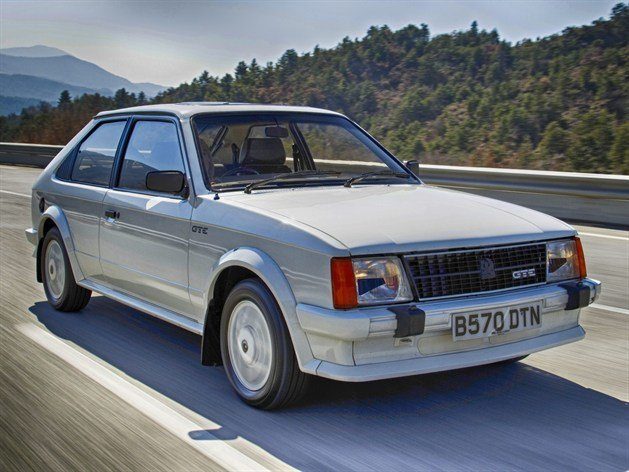
Vauxhall Astra GTE is a superb hot hatch - pacey, great in bends and quick in a straight line.
By the time the Astra GTE went out of production in mid-1984, the hot hatch market had changed again. The Escort RS1600i proved there was still potential in the hot Ford, while the Golf GTI had progressed into Mk2 form. From Italy, the Fiat Strada 130TC and Lancia Delta HF Turbo moved the 0-60mph benchmark into the sub-8 second barrier. But this was the beginning of the next phase of the hot hatch war, with the Astra Mk2 fighting from the front. But that’s another story.
Back to the GTE Mk1, and after a day buzzing through the mountains, I come away really respecting this car’s ability. In modern terms, you could quite happily live with this on a day-to-day basis (or you would if it wasn’t so rare), and it not only be a pain-free experience, but fun, too. Finding one might be a more difficult ask given how few were sold, and the low survival rate, but the search would be worth it.
As an ’80s hot hatch, an early GTE offers the best of both worlds – the ultimate grip of a P6-shod XR3 and the solidity of fun of a Golf GTI. A truly underrated challenger in a crowded market. Just don’t be tempted to buy a Mk2 and expect it to be as good…
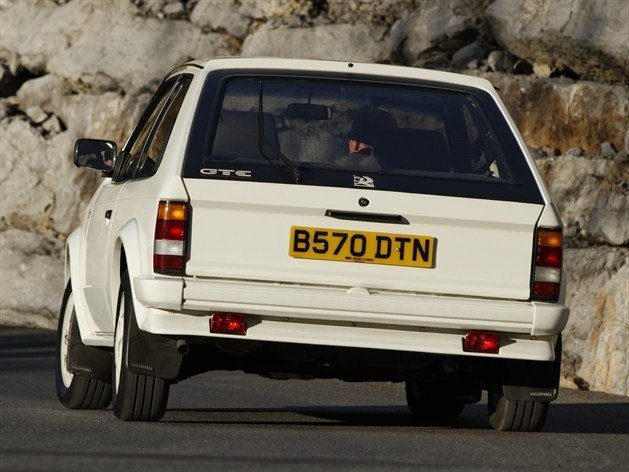
Vauxhall Astra GTE
| 0–60 | 8.5 s |
| Top speed | 118 mph |
| Power | 115 bhp |
| Torque | 111 lb ft |
| Weight | 925 kg |
| Cylinders | I4 |
| Engine capacity | 1796 cc |
| Layout | FF |
| Transmission | 5M |

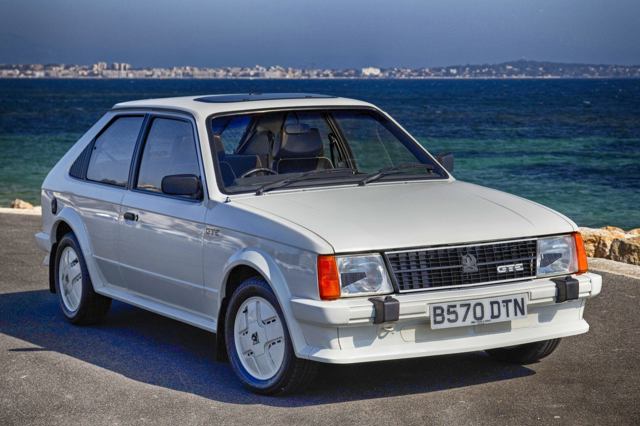
.jpg?width=640&height=426&rmode=crop)
.jpg?width=640&height=426&rmode=crop)
.jpg?width=640&height=426&rmode=crop)
.jpg?width=640&height=426&rmode=crop)
.jpg?width=640&height=426&rmode=crop)
.jpg?width=640&height=426&rmode=crop)
.jpg?width=640&height=426&rmode=crop)
.jpg?width=640&height=426&rmode=crop)
.jpg?width=640&height=426&rmode=crop)
.jpg?width=640&height=426&rmode=crop)
.jpg?width=640&height=426&rmode=crop)
.jpg?width=640&height=426&rmode=crop)
.jpg?width=640&height=426&rmode=crop)
.jpg?width=640&height=426&rmode=crop)
.jpg?width=640&height=426&rmode=crop)